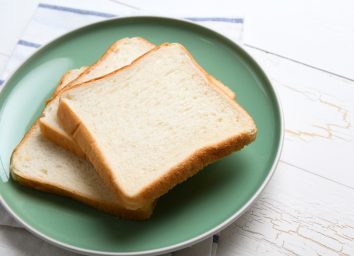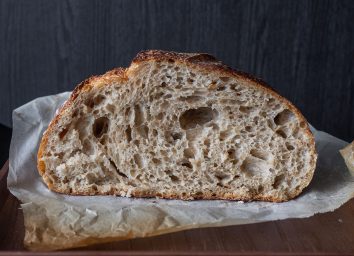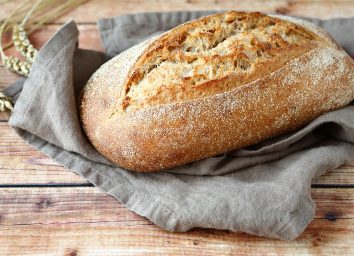5 Ways Bread Can Help You Lose Weight, Say Dietitians
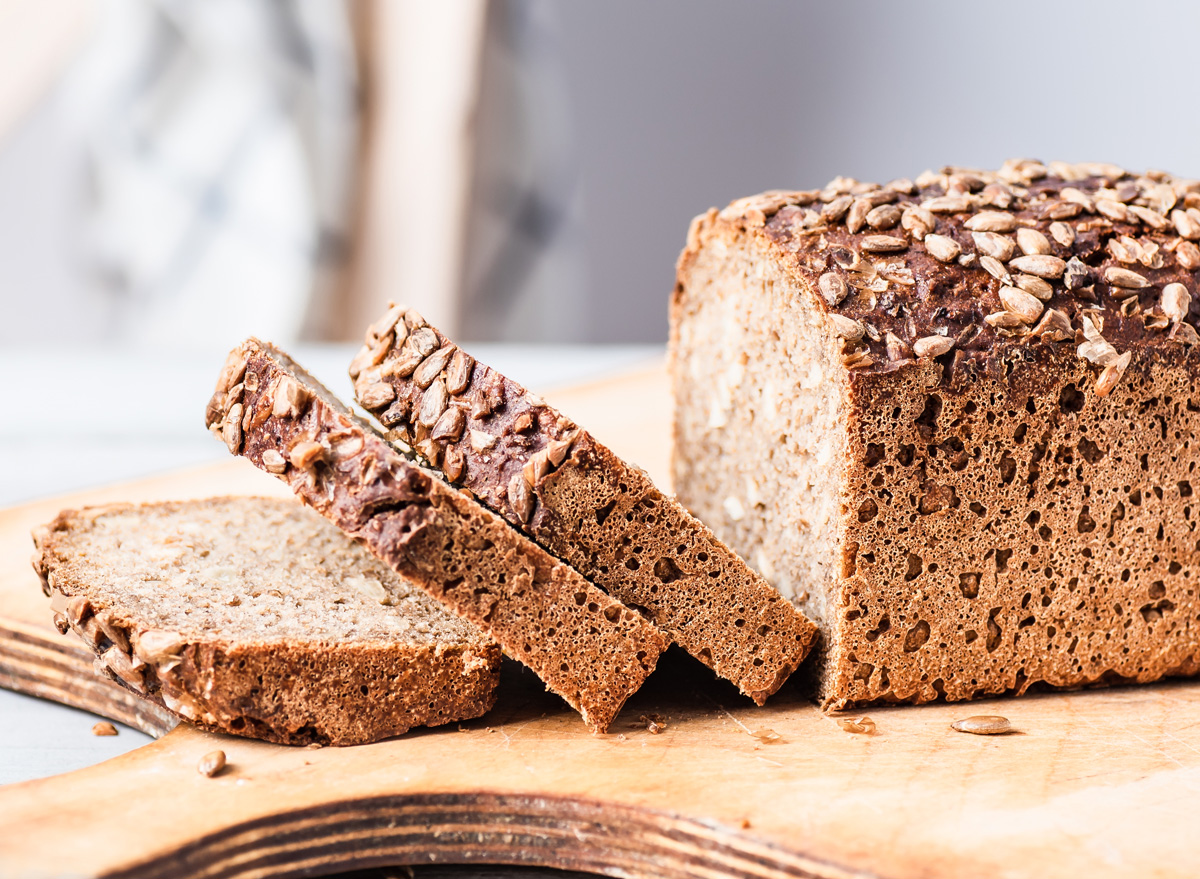
With the rise of popular low-carb diets like keto, eating bread can almost feel like a cardinal sin. Is having a slice of bread with your morning scrambled eggs actually that bad for you? Does eating bread really make you gain weight? The short answer is no.
In fact, many registered dietitians have pointed out the many ways in which bread can help you drop those unwanted pounds.
"First off—bread is satisfying. Especially when it's toasted—there is nothing like sinking your teeth into a perfectly toasted piece of whole grain or sourdough bread," says Frances Largeman-Roth, RDN, nutrition expert and author of Smoothies & Juices: Prevention Healing Kitchen. "If you've been skimping on carbs to try and lose weight, it often backfires because your body and brain crave carbs. It's better to consciously include carbs in your meals to boost satisfaction and the feel-good neurotransmitter serotonin. You'll be less likely to reach for unhealthy snacks if you're feeling satisfied."
At the end of the day, what matters is the type of bread you purchase at the grocery store or reach for at a restaurant.
"Bread, like most carbohydrates, is seen as a negative when it comes to weight loss and overall health," says Trista Best, MPH, RD, LD from Balance One Supplements. "While this may be true for bread made with refined carbohydrates and enriched flour, it doesn't have to be the case for every form of bread. Bread can be a means of helping with weight loss when you opt for bread made with whole-grain flour—not enriched, which can be sourced from wheat, oats, barley, and rye. These [types of] bread provide nutrients and fiber that can aid in your weight-loss goals."
Here are specific ways that whole-grain bread can help you lose weight. For even more healthy eating tips, be sure to read up on our list of The 7 Healthiest Foods to Eat Right Now.
It keeps you fuller for longer.

Many people turn to bread products as a way to fill themselves up during the day while getting a boost of energizing carbohydrates. While this logic technically isn't wrong, the type of bread that's consumed really does matter when it comes to overall fullness—and weight management.
"Many people avoid grains for fear of weight gain but there's really no need," says Lisa Young, PhD, RDN, author of Finally Full, Finally Slim. "Whole grain bread (like whole wheat, oat, or sprouted grain) is filling and contains fiber, which will keep you satisfied for hours. Skip the refined white bread, including oversized bagels, muffins, and muffins."
"Bread isn't necessarily something that makes you gain weight," Megan Byrd, RD from The Oregon Dietitian, adds. "In fact, choosing bread that is high in fiber and whole grains is actually more filling and takes longer to digest. This leads to you feeling fuller longer, having fewer cravings, and having a healthier GI tract, too."
You'll get a boost of fiber.
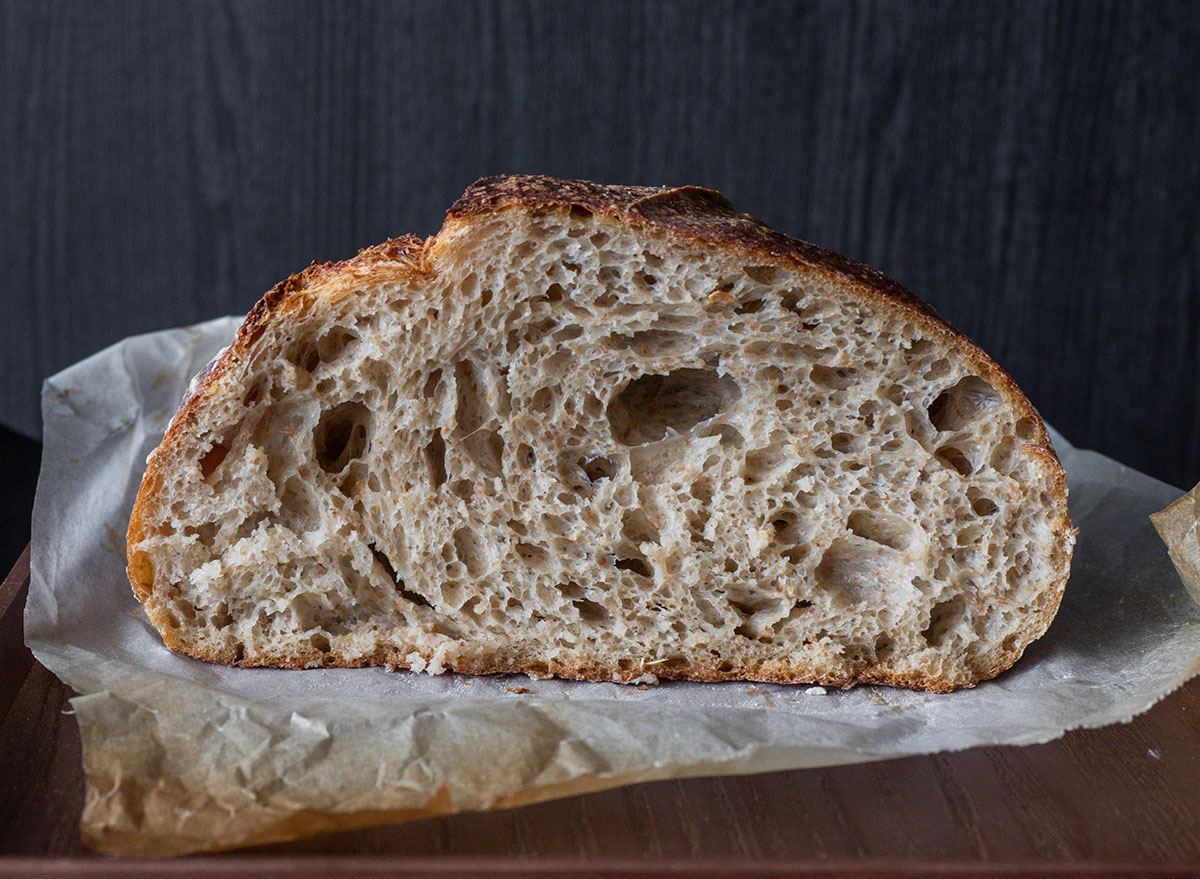
The main contributing factor in bread that keeps you feeling full? Fiber.
Traditional "white" bread isn't as filling because the natural whole grains, including the fiber, are stripped from the wheat during processing. Whole-grain bread still contains those filling nutrients—particularly fiber, which is considered the best thing to eat for weight-loss.
"Whole-grain bread may contain quite a bit of fiber per slice," Jinan Banna, PhD, RD says. "Fiber helps you to feel full and contributes very little in the way of calories to the diet. Enough fiber is a very important part of a diet for weight loss."
According to the American Heart Association, you should consume at least 25 to 30 grams of fiber a day for optimal health. However, the average American diet tends to contain only 10 to 15 grams.
Swapping out the type of bread you buy is an easy way to get that boost of fiber you need. Byrd recommends looking for bread made from 100% whole grains that includes at least 4 to 5 grams of fiber per serving. That means a serving of bread would provide your body with 16% to 20% of your daily recommended fiber intake. (Also, be on the lookout for this The #1 Best Bread to Eat, According to a Dietitian.)
Bread can assist in your gut health.
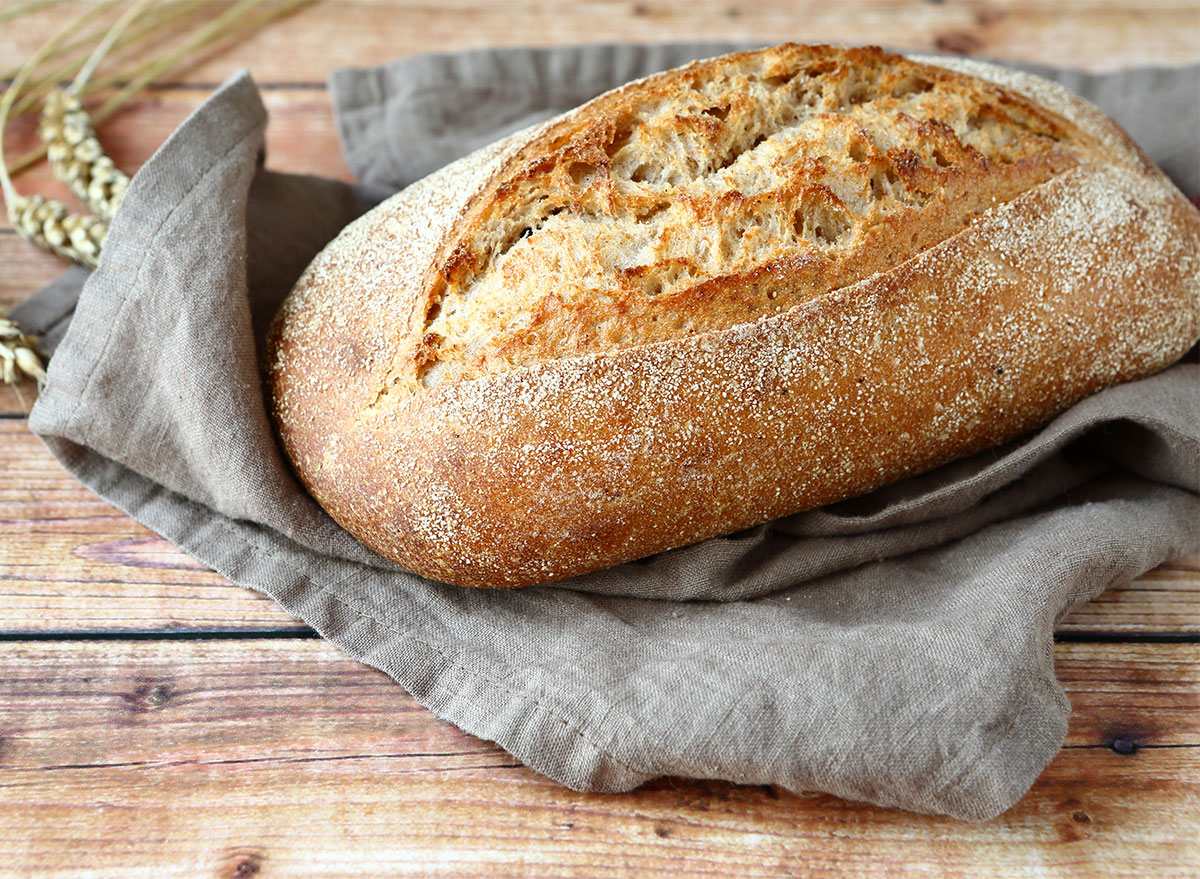
Along with feeling full, one of the most important aspects of eating fiber-rich foods is how fiber plays an important role in your overall gut health, which is a key component in promoting healthy digestion, according to Johns Hopkins Medicine.
"Eating breads that are 100% whole wheat or whole grain means that they are made with whole-wheat/whole-grain flour. In scientific terms, that means that the bran and the germ are still intact, whereas with white bread those parts of the grain have been removed," says Amy Goodson, MS, RD, CSSD, LD, author of The Sports Nutrition Playbook. "This makes the flour richer in fiber, which can help to regulate our blood sugar, promotes positive gut health, reduces your risk for heart disease, and can even help with weight management."
Along with the fiber-rich whole grains, Goodson points out that these types of bread are also full of other beneficial nutrients for your body's health, such as B vitamins, folate, iron, magnesium, manganese, and zinc.
It can help prevent overeating.

It's pretty simple—if your meals keep you feeling full for longer periods of time, you're less likely to snack in between them or overeat at dinner.
"Whole-grain bread types also have a high dietary fiber content," Edie Reads, RD and chief editor at healthadvise.org, says. "This gives you the feeling of fullness for longer, so you don't run out for unhealthy snacks every few hours, [helping to limit] your [overall] caloric intake."
"The fiber found in these types of bread will help to keep you feeling full and satisfied, which can prevent overeating on calorie-dense foods throughout the day," Best adds.
It's a great vehicle for eating other filling foods.
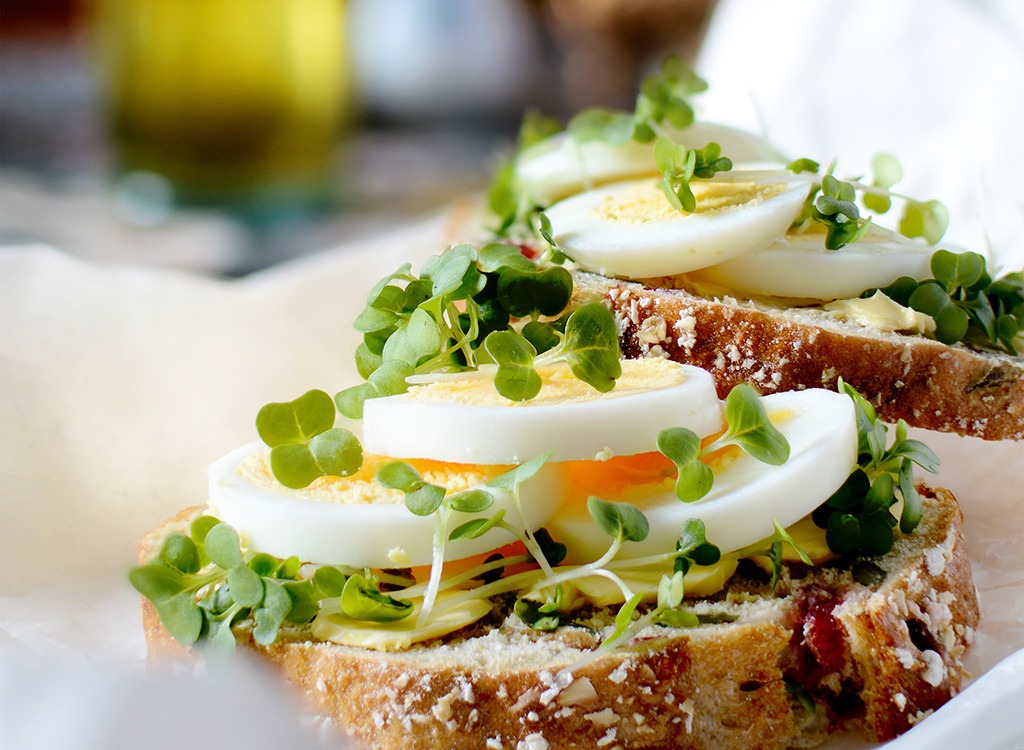
Would you really mash up half an avocado and eat it with a spoon? Probably not. But smashing some avocado onto a slice of whole-grain toast? That meal seems a lot more likely—and a lot more delicious.
Best points out that whole grain bread can be an easy way to add even more filling, nutritious foods to your meal that you wouldn't otherwise get without it. Avocado and eggs are two of the pairings that she recommended, and spreading nut butter and adding some sliced banana also makes for an easy and filling snack. You can also whip up one of these 25 Healthy Sandwich Recipes with your favorite whole-grain bread.
When shopping for whole-grain bread, it's important not to let the labels fool you. In fact, some bread will claim to have "whole grains," but their nutrition labels prove otherwise.
"Avoid one with many preservatives and sugars," Reads says. "Again, pick the one with sprouting grains if you come across one. Such is easy to digest and is an excellent source of nutrients."
Now that you've been thoroughly convinced that bread can help you lose weight, here are the Healthiest Breads to Eat for Weight Loss, According to Dietitians.
